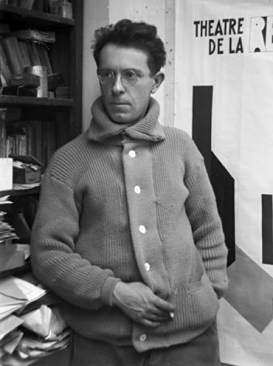
Pablo Ruiz Picasso was a Spanish painter, sculptor, printmaker, ceramicist, and theatre designer who spent most of his adult life in France. One of the most influential artists of the 20th century, he is known for co-founding the Cubist movement, the invention of constructed sculpture, the co-invention of collage, and for the wide variety of styles that he helped develop and explore. Among his most famous works are the proto-Cubist Les Demoiselles d'Avignon (1907) and the anti-war painting Guernica (1937), a dramatic portrayal of the bombing of Guernica by German and Italian air forces during the Spanish Civil War.

Moïse Kisling was a Polish-born French painter. Born in Kraków, then part of Austria-Hungary, to Jewish parents, Kisling studied at the Academy of Fine Arts. He left for Paris in 1910 at the age of 19. After moving to Montmartre, Kisling became a member of the Parisian avant-garde and developed close professional relationships with painters Amedeo Modigliani and Jules Pascin, among others. Kisling gained recognition for portraying the female form and completed numerous nudes and portraits during his career.

Albert Gleizes was a French artist, theoretician, philosopher, a self-proclaimed founder of Cubism and an influence on the School of Paris. Albert Gleizes and Jean Metzinger wrote the first major treatise on Cubism, Du "Cubisme", 1912. Gleizes was a founding member of the Section d'Or group of artists. He was also a member of Der Sturm, and his many theoretical writings were originally most appreciated in Germany, where especially at the Bauhaus his ideas were given thoughtful consideration. Gleizes spent four crucial years in New York, and played an important role in making America aware of modern art. He was a member of the Society of Independent Artists, founder of the Ernest-Renan Association, and both a founder and participant in the Abbaye de Créteil. Gleizes exhibited regularly at Léonce Rosenberg's Galerie de l’Effort Moderne in Paris; he was also a founder, organizer and director of Abstraction-Création. From the mid-1920s to the late 1930s much of his energy went into writing, e.g., La Peinture et ses lois, Vers une conscience plastique: La Forme et l’histoire and Homocentrisme.

Árpád Szenes was a Hungarian-Jewish abstract painter who worked in France.
Christian Zervos was a Greek-French art historian, critic, collector, writer and publisher.

Musée d'Art Moderne de Paris or MAM Paris, is a major municipal museum dedicated to modern and contemporary art of the 20th and 21st centuries, including monumental murals by Raoul Dufy, Gaston Suisse, and Henri Matisse. It is located at 11, Avenue du Président Wilson in the 16th arrondissement of Paris.
Henri-Georges Adam was a French engraver and non-figurative sculptor of the École de Paris, who was also involved in the creation of numerous monumental tapestries. His work in these three areas is regarded as among the most extensive of the twentieth century.

Henri Victor Gabriel Le Fauconnier was a French Cubist painter born in Hesdin. Le Fauconnier was seen as one of the leading figures among the Montparnasse Cubists. At the 1911 Salon des Indépendants Le Fauconnier and colleagues Jean Metzinger, Albert Gleizes, Fernand Léger and Robert Delaunay caused a scandal with their Cubist paintings. He was in contacts with many European avant-garde artists such as Wassily Kandinsky, writing a theoretical text for the catalogue of the Neue Künstlervereinigung in Munich, of which he became a member. His paintings were exhibited in Moscow reproduced as examples of the latest art in Der Blaue Reiter Almanach.

Joseph Csaky was a Hungarian avant-garde artist, sculptor, and graphic artist, best known for his early participation in the Cubist movement as a sculptor. Csaky was one of the first sculptors in Paris to apply the principles of pictorial Cubism to his art. A pioneer of modern sculpture, Csaky is among the most important sculptors of the early 20th century. He was an active member of the Section d'Or group between 1911 and 1914, and closely associated with Crystal Cubism, Purism, De Stijl, Abstract art, and Art Deco throughout the 1920s and 1930s.

Le Chemin, Paysage à Meudon also known as Paysage avec personage, is an oil on canvas painted in 1911 by the artist, theorist and writer Albert Gleizes. The work was exhibited at the Salon des Indépendants during the spring of 1911, Paris; Les Indépendants, Musée moderne de Bruxelles, 1911; Galeries Dalmau, Exposicio d'art cubista, Barcelona, 1912; Galerie La Boétie, Salon de La Section d'Or, 1912. The painting was reproduced in the journal Le Siècle (1912) in an article titled Enquête sur le Cubisme, by Olivier Hourcade.

Woman with Phlox is an oil painting created in 1910 by the French artist Albert Gleizes. The painting was exhibited in Room 41 at the Salon des Indépendants in the Spring of 1911 ; the exhibition that introduced Cubism as a group manifestation to the general public for the first time. The complex collection of geometric masses in restrained colors exhibited in Room 41 created a scandal from which Cubism spread throughout Paris, France, Europe and the rest of the world. It was from the preview of the works by Gleizes, Jean Metzinger, Henri Le Fauconnier, Robert Delaunay, and Fernand Léger at the 1911 Indépendants that the term 'Cubism' can be dated. La Femme aux Phlox was again exhibited the following year at the Salon de la Section d'Or, Galerie La Boétie, 1912. La Femme aux Phlox was reproduced in The Cubist Painters, Aesthetic Meditations by Guillaume Apollinaire, published in 1913. The same year, the painting was again revealed to the general public, this time in the United States, at the International Exhibition of Modern Art, New York, Chicago, and Boston. The work is now in the Museum of Fine Arts, Houston, Gift of the Esther Florence Whinery Goodrich Foundation in 1965.
Stéphane Laurent is a French historian born in Rueil-Malmaison, near Paris, France, in 1966. He is professor of art history at the Université Paris-1 Panthéon-Sorbonne since 1999, where he directs the specialty in Art and Industry. He also taught at the University of Paris IV-Sorbonne, at the University of Berkeley and in universities of the Middle East.

Didier Ottinger, born in Nancy in 1957, is a French museum curator, art critic and author. He is known for organizing exhibitions and publishing books on modern and contemporary painting. He is now assistant director of the Centre Pompidou at the Musée national d'art moderne in Paris.

Diana Widmaier Picasso is a French art historian specialized in modern art, living in Paris.
Staffan Ahrenberg is a Swedish art collector, entrepreneur, film producer, and the owner and publisher of the French publishing house Cahiers d'art.

Still Life with Checked Tablecloth is an early 20th century painting by Spanish Cubist artist Juan Gris. Done in oil and graphite on canvas, the painting depicts a table set with grapes, a bottle of red wine, beer, a newspaper and guitar. In addition, the composite image formed from these various objects can be seen as Gris' take on a bull's head. The work is in the collection of the Metropolitan Museum of Art.
Jacques Lassaigne was a French art historian, an art critic who served as president of the International Association of Art Critics from 1966 to 1969, and a museum curator acting as chief curator of the Musée d'Art Moderne de la Ville de Paris from 1971 to 1978. He was a prolific author who wrote numerous volumes of scholarly books on the subject art history, notably in collaboration with the publisher Albert Skira and his publishing house Editions D'Art Albert Skira in the 1950s and 1960s, many of which have been translated into English, Italian, German, and Spanish and published internationally. Jacques Lassaigne's books and museum exhibitions, with accompanying catalogues and essays, constitute a significant contribution to art history and have consistently been reference and cited by innumerable subsequent researchers and historians for decades.
Picasso. In the heart of darkness (1939–1945) is an exhibition presented October 5, 2019 through January 5, 2020, at the Musee de Grenoble. Presented with the help of the Musée Picasso, the Centre Pompidou, and the Kunstsammlung Nordrhein-Westfalen, it was the first exhibition in France featuring the creative process of Pablo Picasso during the Second World War.

Étienne Bertrand Weill (1919-2001) was a French photographer. His primary works were abstract Metaforms.













